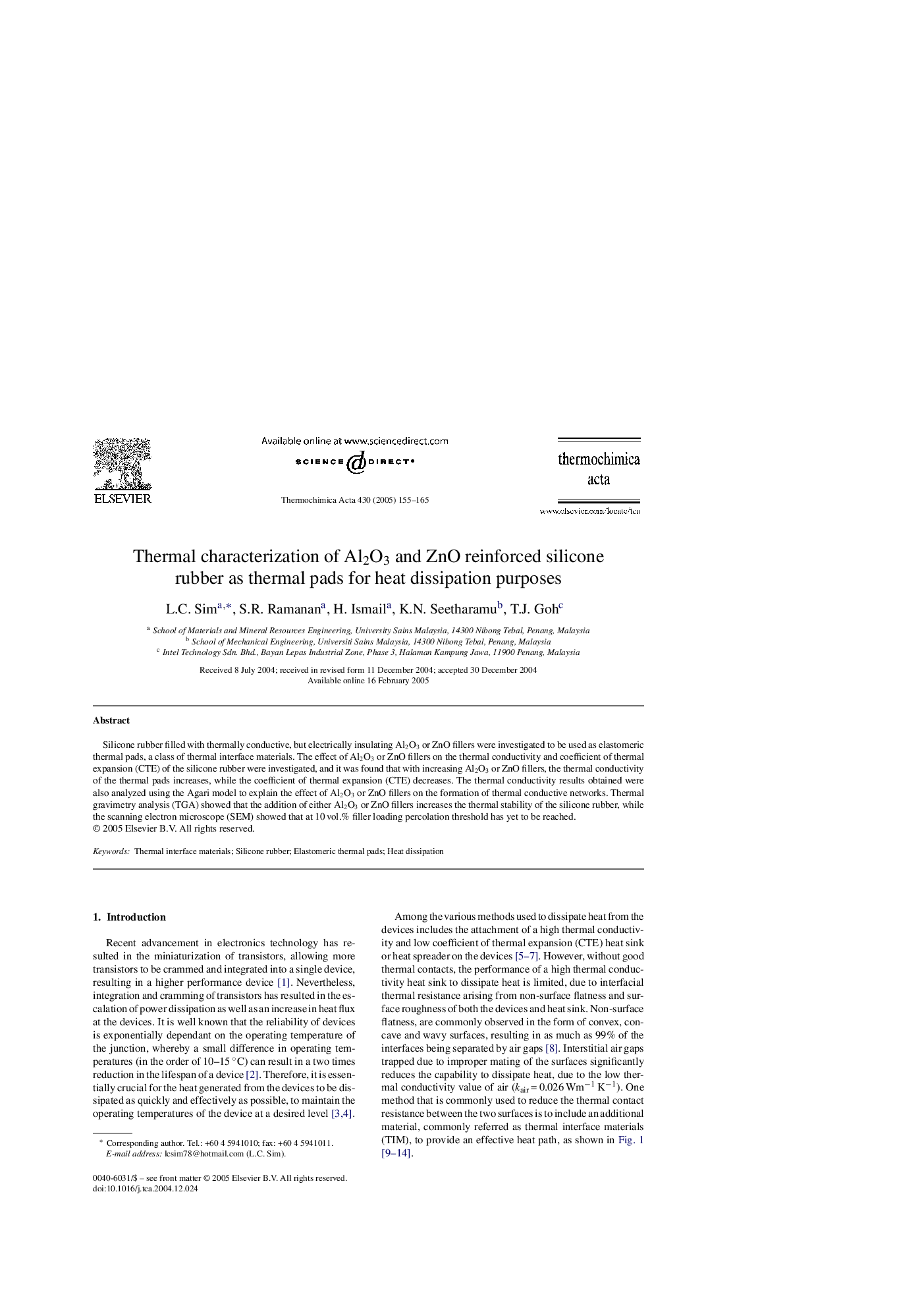| Article ID | Journal | Published Year | Pages | File Type |
|---|---|---|---|---|
| 9694145 | Thermochimica Acta | 2005 | 11 Pages |
Abstract
Silicone rubber filled with thermally conductive, but electrically insulating Al2O3 or ZnO fillers were investigated to be used as elastomeric thermal pads, a class of thermal interface materials. The effect of Al2O3 or ZnO fillers on the thermal conductivity and coefficient of thermal expansion (CTE) of the silicone rubber were investigated, and it was found that with increasing Al2O3 or ZnO fillers, the thermal conductivity of the thermal pads increases, while the coefficient of thermal expansion (CTE) decreases. The thermal conductivity results obtained were also analyzed using the Agari model to explain the effect of Al2O3 or ZnO fillers on the formation of thermal conductive networks. Thermal gravimetry analysis (TGA) showed that the addition of either Al2O3 or ZnO fillers increases the thermal stability of the silicone rubber, while the scanning electron microscope (SEM) showed that at 10Â vol.% filler loading percolation threshold has yet to be reached.
Related Topics
Physical Sciences and Engineering
Chemical Engineering
Fluid Flow and Transfer Processes
Authors
L.C. Sim, S.R. Ramanan, H. Ismail, K.N. Seetharamu, T.J. Goh,
